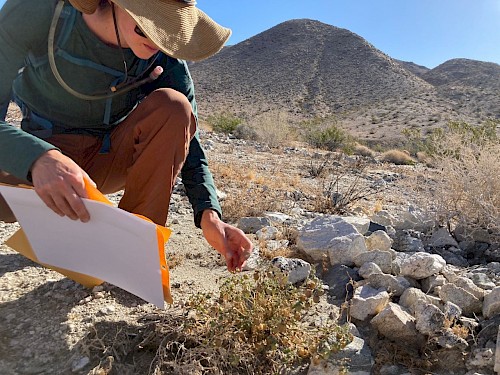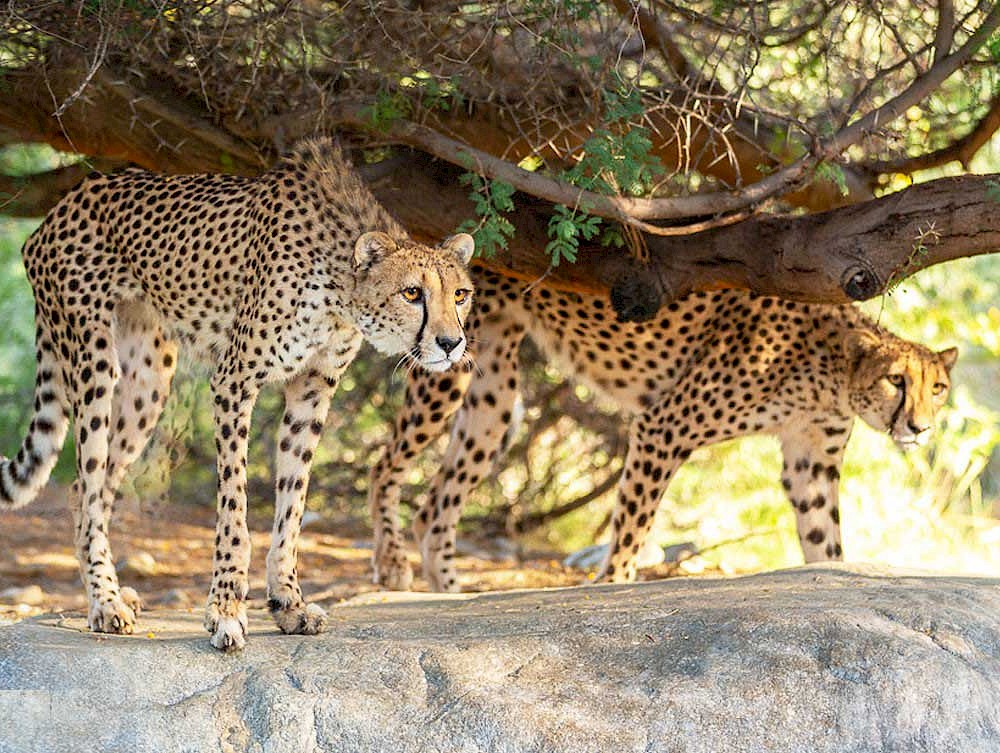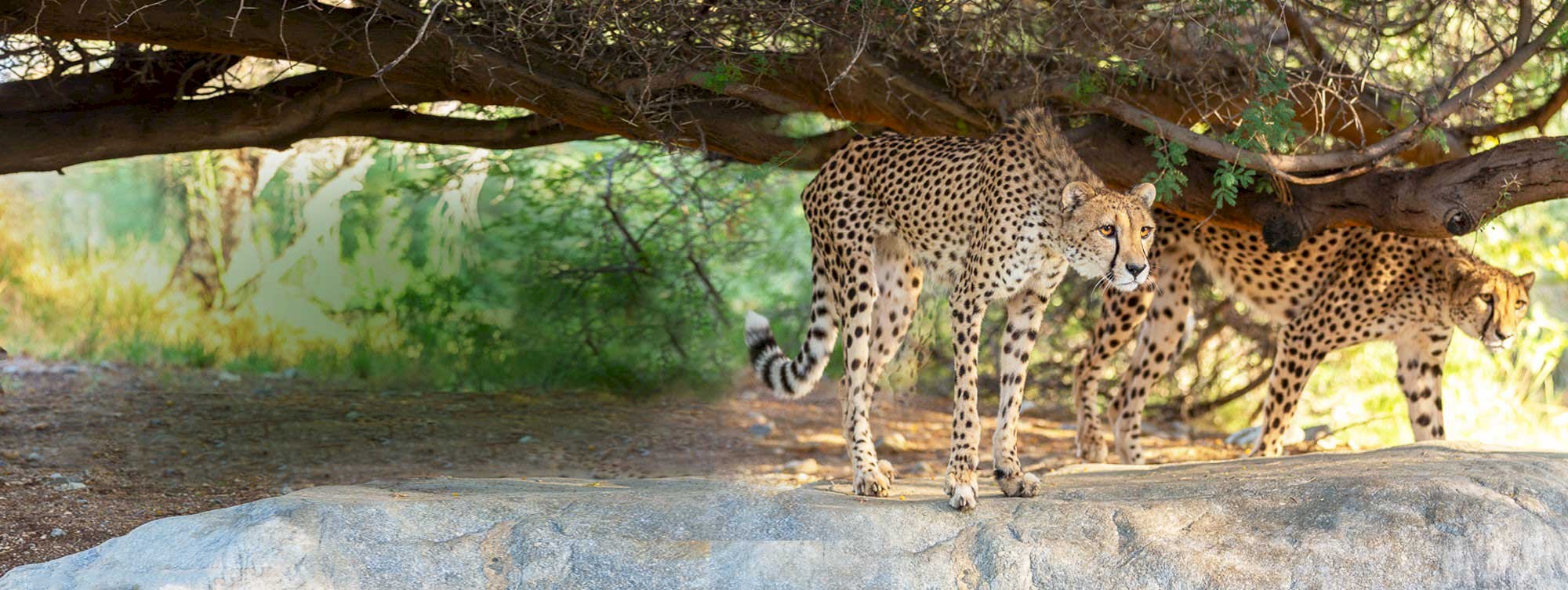Helping Wild Tortoises Win
February 20, 2023By Dr. James Danoff-Burg, Director of Conservation
Anyone living in Southern California is aware of the impacts of climate change. In the Coachella Valley, we are all experiencing hotter summers and drier years, resulting in less natural vegetation in our wild places. This is of course a huge challenge for our beloved desert tortoises. In the Orocopia Mountains, to the south and east of Joshua Tree National Park, our wild tortoise population is having to cope with these massive changes. We have been embracing the opportunity to improve the area for the desert tortoise in three ways that we hope will have long-term benefits.
Unfortunately, this lovely area of the California deserts has been experiencing rainfall the last few years that is no more than a fifth of what was already only a few inches of rain a year prior to the current drought. The last few years, its received less than a half inch of rain-- well below what would be best for the annual and perennial plants that are the delicious basis of the diet of desert tortoises. This area is also the southern-most limit of the geographic range of desert tortoises. As such, it was already a challenging bit of habitat. This area is an important assay for the impacts of climate change and thus provides us the opportunity to test how we can best mitigate these threats.
The last few years, all of The Living Desert's conservation team and many of our wonderful volunteers have been working to help the desert tortoise population in the Orocopia Mountains. You cannot measure what you don’t measure, so we’re monitoring plant diversity in the field site twice annually. The good news is that although there wasn’t much rain this year, it is more than past years. As such, plant diversity and density have increased by about 25% so far this winter. This is the outcome of the much heralded atmospheric rivers that have added so much rain elsewhere in California. We’ve received much less than elsewhere of course, but even the half inch or so that the Orocopias have received is paying off dividends.

The main interventions on which we are working are three fold. Our first efforts involve the collection of seed from a dozen species of desert tortoise favored food plants in the location. We grow the plants until they flower and then collect the seed. We’ll embed the seeds into clay balls from these plants and then disperse them across the landscape, burying them under the surface so as to enrich the seed bank. When there is rain in the future, these tens of thousands of seeds will sprout, and provide ample food for the tortoises in the Orocopias.
Our second effort is to directly plant the most hardy of desert tortoise food plants out into the Orocopias - beavertail prickly pear cactus. Tortoises love the fruits, of course, and are remarkably able to consume even the spiny pads when necessary for water and carbohydrates. The almost 200 that we will outplant will grow and produce ample food for many tortoise meals.
Last, we are hoping to alter the flow of water across the landscape with small modifications to rutted parts of the landscape. Narrow erosional valleys have formed due to the extreme aridity in the Orocopias and the impacts of sudden rain. As such water runs off the landscape very quickly through these rutted watercourses. We will be creating rock covered patches that will slow the water, encourage sediment retention, and spread the water more broadly across the area in so doing. We have been able to do this elsewhere successfully and are confident that these small rock patches will help retain the water in landscape, while also dispersing it across the area more broadly.
We feel blessed to be able to partner with the Bureau of Land Management, the US Fish and Wildlife Department, and the US Geological Society in these efforts. Saving species is a team activity and leading these efforts is a great honor on our part. We love desert tortoises and hope you do too!









